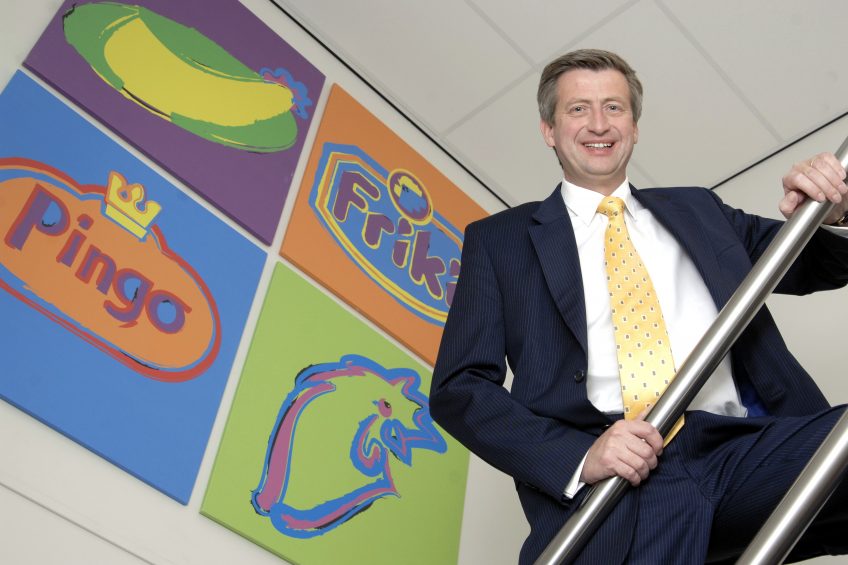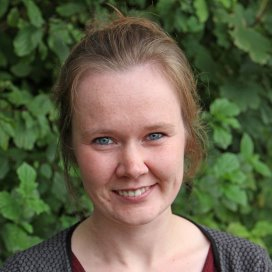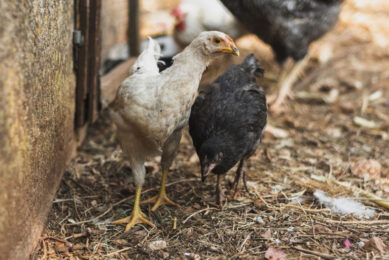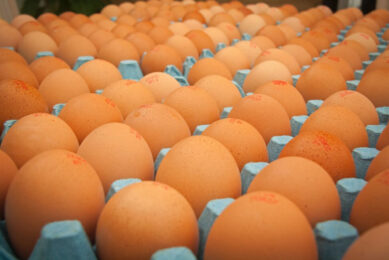“Plukon will grow for sure”

Plukon Food Group wants to enter the Polish market via a new slaughterhouse. Managing director Peter Poortinga says, the Polish market offers many opportunities and he is also positive about the developments in the Netherlands. “I think there is a very positive flow in the broiler industry,” he says about the developments set in motion with the introduction of the Chicken of Tomorrow.
A fourth production country in Eastern Europe has been part of the ambitions of Plukon Food Group for some time, and is likely to become a reality soon. In early September the leading poultry processor in the Netherlands announced to have concluded an agreement in principle with the Wyrebski owned family business, on building a new slaughterhouse in Poland.
The collaboration is still subject to the approval of the competition authorities and the outcome of the audits. The new step is partially possible thanks to the new investors Plukon attracted during the past year: the German EW Group (owner of breeding companies Aviagen and Lohmann) and feed producer De Heus. It is yet another growth spurt of Plukon, which tripled in size over the past decade, among others thanks to acquisitions of the Pingo companies (2005), Flandrex (2008) and the German Stolle (late 2011).
Buying poultry meat from third parties
“Poland has become one of Europe’s largest poultry producing countries, so it makes perfect sense to look into that,” says Peter Poortinga, managing director of Plukon Food Group, about the latest plans. Plukon counts 5 location in the Netherlands, 3 in Belgium and 5 in Germany. Especially in the Netherlands and Germany the company runs into serious limitations imposed by legislation which makes further expansion difficult. “Here it is extremely difficult to obtain a permit to build new houses,” says Poortinga. “And in Poland permits are granted relatively easy. The houses grow faster there than the slaughter capacity, leaving enough room for slaughterhouses to grow along.”
With its production in Poland, Plukon wants to focus on the Polish (retail) market and the wholesale market in north-western Europe. It also helps to close our own chains again, Poortinga explains. “We serve a part of the convenience market, cooked products, and are currently buying poultry meat from third parties. In the near future we will be able to obtain this from our own group.” Poortinga compares the Polish market to the market in north-western Europe as it was 10 to 15 years ago. “Here we operate at the top end of the market, with an enormous extensive indoor chain and a very large ‘Goed Nest Kip’ chain. In Poland we produce according to European standards.” ‘Goed Nest Kip’ is a slow growing chicken concept which dominates the Dutch retail market.
“The broiler industry is an industry with a good future.“
Room for growth
The construction of a joint venture allows Plukon to get acquainted with the Polish market, with a partner who knows the local market and circumstances. This does not preclude that this will be a stepping stone for more activities in the region. “We are ambitious,” he smiles. “Plukon will grow.” Adding his wish to stay in Europe and north-western Europe. “We just started in Poland and are relatively small. In the Netherlands we have grown strongly over the years, here we account for almost one third of the poultry meat. I think we also account for more than one third of the chicken in Belgium. Vion accounts for more than half of the pigs in the Netherlands, Cosun 100% of sugar beets. This implies one third is only relative. There is plenty of room for growth. It depends on the possibilities, what lies ahead and whether or not it adds value.”

Major players in the broiler industry
Last year Plukon bought the adjacent former Wehkamp-terrain in Dedemsvaart, with the ultimate aim of expanding its capacity with faster lines. Moreover slaughtering happens more and more ‘in line’, for which more square meters are needed. Although currently there is no lack of slaughter capacity in the Netherlands and surrounding countries, it does align with Plukon’s strategy. Over the past years the company closed several slaughter locations in order to re-organise and optimise production. Poortinga speaks of an economic mechanism. Technique is becoming more advanced, greater investments must be made. Capacity will increase and eventually smaller companies that didn’t invest will disappear. The French giant LDC has absorbed several smaller players, resulting in a concern with more than 44 slaughterhouses of which 4 are in Poland. But also the large German PHW Gruppe is active in Poland and the Netherlands (via Esbro) and the 2Sisters Group has locations in England, the Netherlands and Poland. “Big processors arise everywhere. And those big consolidations will continue to be made over the next 20 years.” The Plukon executive can imagine farmers will consider these major powers to be threatening, but points out there is plenty of competition within the broiler industry in north-western Europe, and that in many agricultural sectors major players were created, which include co-operations with the approval of farmers.
“With our focus on animal welfare and healthy food, people have a good story to tell“
Development concepts
Poortinga is very positive about the current development in the Dutch broiler sector. “I think there is a very positive flow in the broiler industry”, he says. “Right after the outbreaks of avian influenza in 2003 the poultry sector concluded the agreement of Utrecht, in which we stated we should produce for the triangle Paris/London/Berlin. We have made steps geographically, the sector is increasingly socially valued, and giant steps were made in terms of animal welfare and health. It is an industry with a future. If you read the agricultural press every now and then there are quite a few sectors that are less forthcoming. The broiler industry is a nice exception, and perhaps the example that can lead to a positive glimpse of the future.”
The speed at which the Chicken of Tomorrow found its way to the shelves surprised him too. The chains had to step on the accelerator. Meanwhile the ‘Goed Nest Kip’ chain is stable. With the introduction of slow growing breeds the use of antibiotics has declined significantly. On a yearly basis about 90 to 95% of the ‘Goed Nest Kip’ houses is free of antibiotics. Poortinga calls this the most important by-catch, which may even turn out to be the most valued catch of the introduction of the Kip van Morgen. “The first pillar of the Kip van Morgen was animal welfare. The second pillar would focus on the environmental aspect. I think we should adapt to a new paradigm in the direction of the wish of society to reduce antimicrobial resistance. Poultry meat is healthy, it is lean. But I think reducing the pressure of antibiotics could be the second large asset, which will assign the designation ‘healthy’ even more. Particularly when you keep in mind that chicken has become affordable, it is no longer organic meat which costs more than € 25 per kilogram.”
Evolution in the poultry meat market
Poortinga also mentions other effects he sees through the new concepts. “Due to these developments there is much less attention for the poultry industry. There are other social issues in animal husbandry that people are focusing on now.” He expects the effect to be permanent, as consumers are provided with greater choice on the shelf. “In France and Belgium there are several types of chicken, this social pressure never existed here. In the Netherlands the focus was completely on cost price and one type of chicken. A shelve with more choice in several types of chicken was required.” According to him the entire broiler industry benefits from the development towards chains with slower growing chickens, because it narrowed the total supply in the Netherlands. “In view of the growth of Poland over the past five years, it might be good other segments have evolved here. Otherwise the pressure on the market in north-western Europe would have been greater.” He assumes broiler farmers who switch to the concepts will also benefit from financial added value on the long-term. “You have to become a distinct stream in the enormous ocean of chicken. With this you make it more difficult to import from mass production countries.”
The new concepts have had some other effects. A lot more chicken is sold ‘square’ than before, by boning legs and making a product of this leg meat. “Leg meat has become a surprising trend in the meat world, in terms of change this year,” Poortinga points out.
Indoor chicken export
The concepts encourage diversification. At this moment the products only serve the Dutch market. However, Poortinga also sees opportunities abroad, when the ‘Goed Nest Kip’ chain in the Netherlands is stable. “We have been selling our extensive indoor chicken in Germany for several years now. An export product for the higher segment is emerging there. I think the ‘Goed Nest Kip’ will make a good export product as well in the long-term.” He doesn’t focus directly on specific countries, but on companies who want something different, such as KLM which serves Plukon’s extensive indoor chicken during flights. “Companies and organisations want to put something distinctive on the menu. Local restaurants here at the Veluwe, often buy their beef from a butcher in Oene, coming from special cows. People want to have a story to tell. With the two pillars mentioned, animal welfare and health, people have a good story to tell.”
Peter Poortinga (55)
CEO Plukon Food Group. Graduated in business management, specialising in crop science at Wageningen University and started as a buyer of live poultry at Vleesch du Bois, to become managing director in 1994. Over the last 22 years Poortinga has been at the core of the company, it developed into one of Europe’s largest poultry processing companies with 13 locations in 3 countries.













